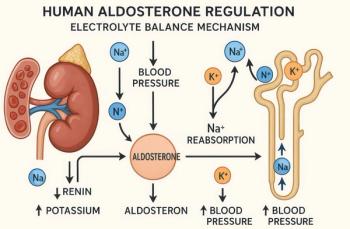
CardioBrief: Slow Down Urged on SPRINT
The 25% reduction in relative risk seen in patients treated to 120 vs 140 mm Hg corresponds to an absolute risk reduction of 1.6%.
Aggressive BP treatment draws more skeptics
Although the 25% reduction in relative risk in the primary composite outcome "sounds impressive,"
They estimated that treating 1,000 people for 3.2 years with more aggressive treatment would result, on average, in a beneficial effect in 16 persons, serious harm in 22, and no benefit or harm in 962. They write:
"Patients may believe that it is worthwhile to aim for lower BPs if they hear that receiving 3 drugs every day for more than 3 years might reduce their risk for cardiovascular events by 25%. However, after learning that their likelihood of absolute benefit is only 1.6%, with a greater likelihood of serious harm, their enthusiasm for more medications may diminish."
Given the low overall rate of events in SPRINT, "statistically significant differences may not necessarily correspond to differences that patients or their physicians consider clinically significant."
Ortiz and James also criticized the way the NIH promoted the study, emphasizing the benefits of aggressive therapy while ignoring its harms. This, they said, raises the specter of overtreatment.
They do concede that SPRINT should be incorporated into clinical practice, but the "process should carefully consider the overall body of evidence; potential harms, burdens, and costs of more aggressive treatment; and patient preferences."
They recommend a nuanced response to SPRINT as opposed to a "one-size-fits-all" approach. A more aggressive approach may be warranted in a 55-year-old high-risk patient without other conditions. More caution is warranted for a 79-year old patients with multiple comorbid conditions who is already taking two or three antihypertensive drugs.
SPRINT, they concluded, did not provide "convincing evidence that large segments of the population should be treated with additional drugs to a systolic BP goal less than 120 mm Hg, especially when the adverse events, costs, and burden of such treatment are considered."
Additional Commentary
"For example, if you are an older individual, one of the major concerns would be an increase in injurious falls. Although the authors of the commentary state that this is increased, in regards to serious adverse events, there were actually fewer injurious falls" and a similar number of emergency room visits.
"Why not let the individual who is 79 years old make the decision with real information, show the events that are avoided such as death and heart failure and show the increase in side effects which most patients would not consider as serious?" he asks.
Further, Ballantyne pointed out, the absolute reduction in risk is actually greater in older patients. "I do not understand why the authors of this paper suggest that we selectively ignore the much greater absolute benefit in the elderly and the greater relative risk reduction. How can the results of this study be used to say we should be aggressive in the young when they had the least benefit?"
Others contacted by MedPage Today, were likely to side with the editorial writers.
Lee Green, MD , of University of Alberta, said that he generally agreed with the editorialists and that he shares "their concern about the hype exceeding the reality." Lee was lightly more encouraged by the risk-benefit analysis of the trial, as the serious harms in the trial had "less impact on patients than the benefits (stroke, MI)." He added that "for a very limited subset of properly chosen patients," aggressive therapy as in SPRINT "is a reasonable, though by no means compelling, option for a small benefit at the risk of a lot of side effects."Marc Itskowitz, MD , of Temple University, said it was an "important editorial." "Many people do not understand the difference between relative and absolute risk reduction. I remain concerned about the potential risks of over treating hypertension," he said. "We need to apply the results of SPRINT very selectively."Albert Levy, MD , a primary care physician in New York City, said that he "started to be more aggressive with my patients" when SPRINT first came out." But, he said, the Annals editorial is "timely and welcome." I have found many of my elderly patients do feel better on a little elevated blood pressure rather than with hypotensive symptoms."
And
Newsletter
Enhance your clinical practice with the Patient Care newsletter, offering the latest evidence-based guidelines, diagnostic insights, and treatment strategies for primary care physicians.
















































































































































































































































































